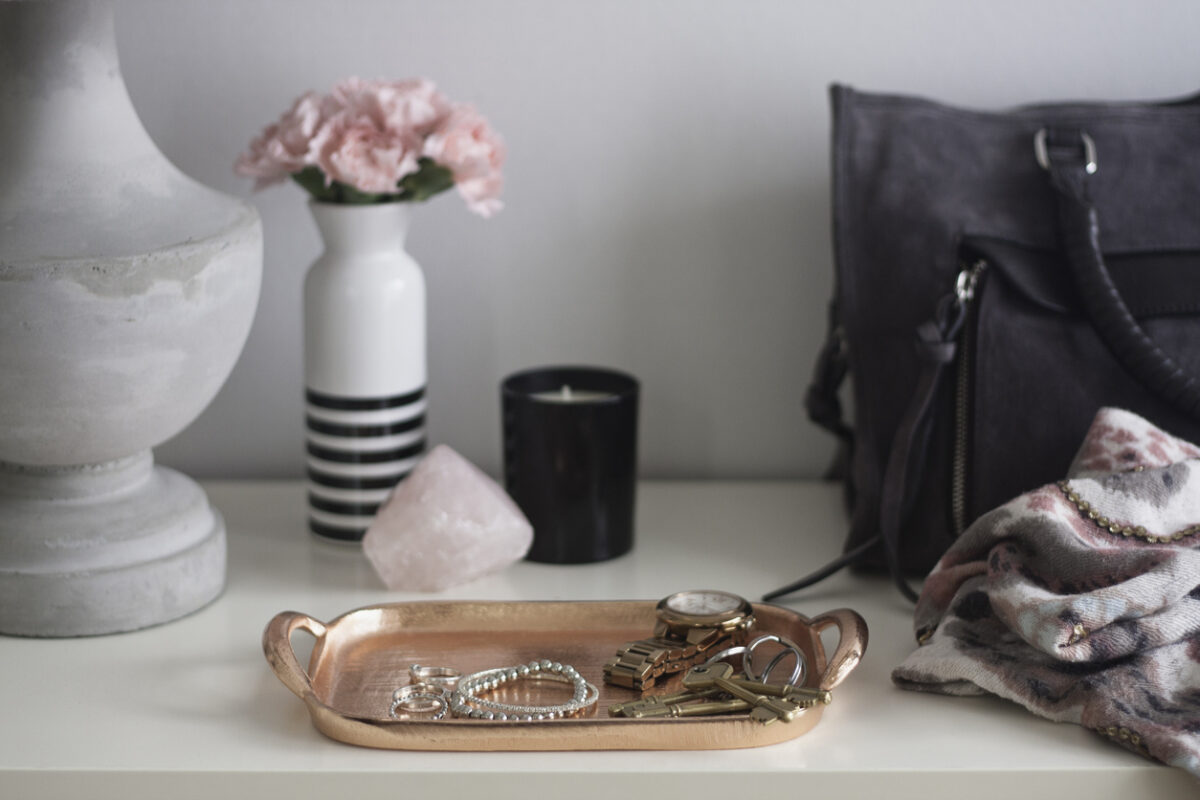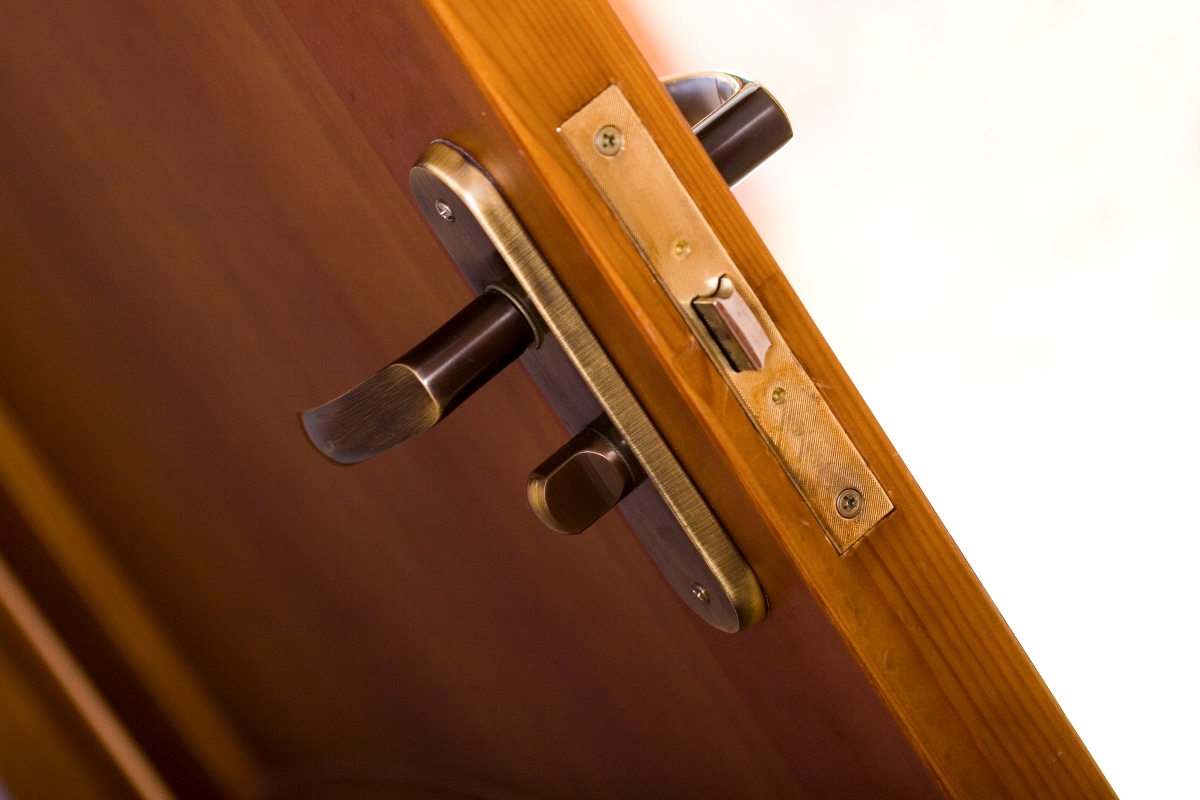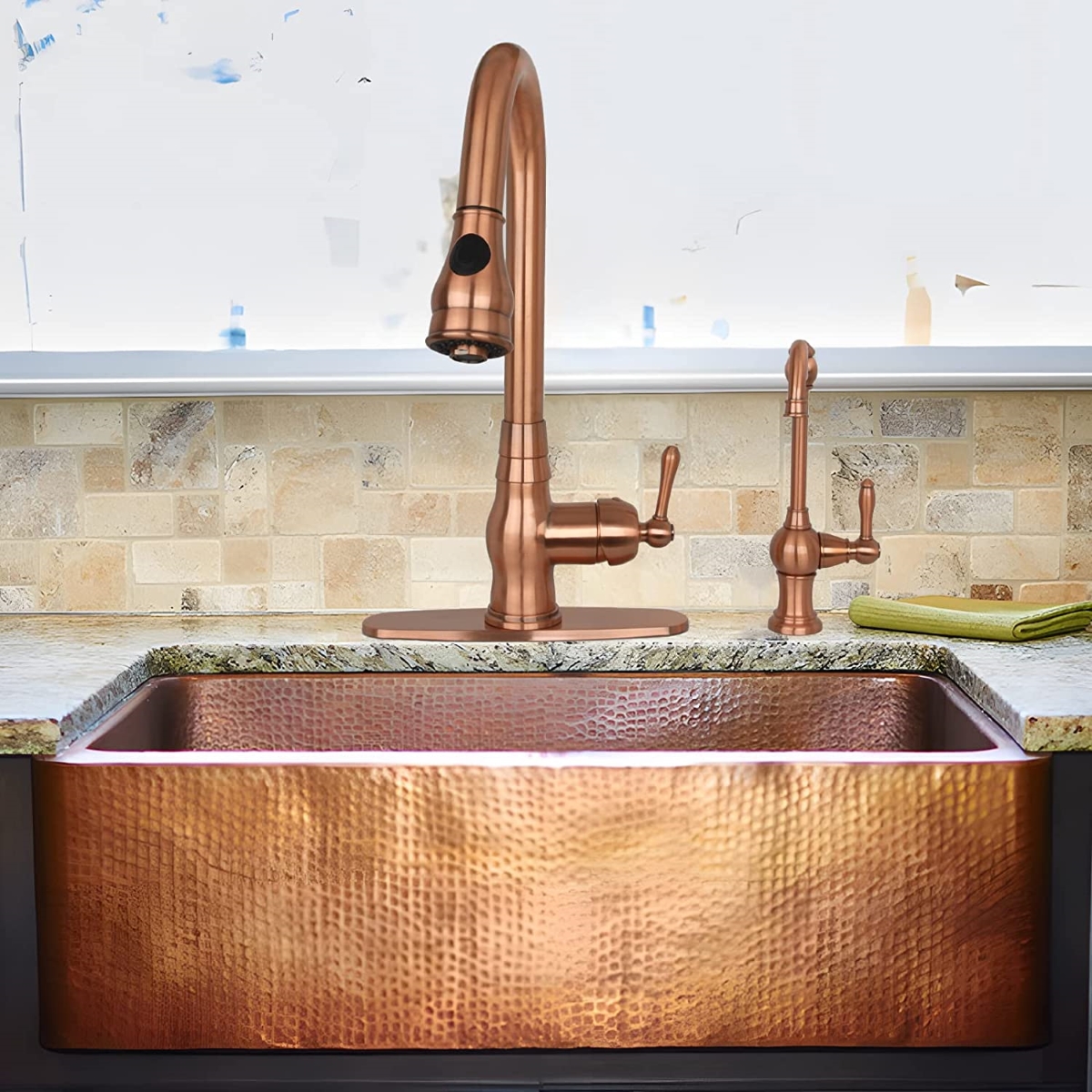

We may earn revenue from the products available on this page and participate in affiliate programs. Learn More ›
A worldwide pandemic has made everyone more aware of what they touch. Many bacteria and viruses, including Covid-19, can survive on surfaces for hours or even days. But their lifespans can significantly drop in the presence of copper and its ions.
While copper may be pretty, it’s been used for thousands of years for more than just its aesthetics. Several ancient cultures, from China to Phoenicia, knew that copper had natural health benefits, though they lacked the science and technology to pinpoint precisely why.
Copper coins became medicinal aids, and water containers made of copper helped prevent common illnesses. Objects made of copper can still help today, and we know why this common metal puts the hurt on germs.
RELATED: 11 Ultra Powerful Products That Cut Your Cleaning Time in Half

Copper is antimicrobial.
Copper is far more fierce than many people realize. This common metal has natural antibacterial and antiviral properties that neutralize germs, including Covid-19, within a few minutes of direct contact. Copper’s killer instincts actually have to do with copper ion bonding and cross-linking.
When a bacterium or virus lands on a surface with a high enough copper concentration, the copper ions enter cell membranes (in the case of bacteria) and damage DNA or RNA. Not too long after that, the bacterium or virus dies. However, copper ions aren’t airborne, so the microbes have to land directly on the copper. This makes copper an excellent choice for high-touch surfaces.
Copper is commonly used in hospitals and operating rooms to help reduce infections. A 2015 study found that ICU rooms with copper alloy surfaces had lower instances of MRSA (a strain of Staphylococcus) and vancomycin-resistant Enterococcus (VRE). Copper is also increasingly being used in public places on banisters, doorknobs, and faucets. Evidence also shows that copper alloys (copper mixed with other materials) with higher copper concentrations kill more germs than those with lower concentrations, and they kill them faster.
However, the death of a virus or bacterium isn’t instantaneous. It takes up to 2 hours for copper to kill the offending microbe. So, while copper is helpful, good sanitation and cleaning practices are also still necessary.
What kind of copper can help in your home?
The EPA has approved more than 500 antimicrobial copper alloys for home use. In fact, there’s such high interest that the EPA created an Antimicrobial Stewardship website specifically for copper alloys. While it doesn’t list specific copper products, it does offer a list of EPA-registered copper suppliers who produce alloys used in industrial, commercial, and residential products.
You can get the benefit of copper by adding it to strategic places in your home. The object doesn’t have to be pure copper, though the highest copper content possible yields the best results. It can be a copper alloy like bronze or brass, which are far more common than pure copper and still offer some antibacterial and antiviral help.
Look closely when buying copper products. Some may be made of stainless steel with a copper finish, which may have some copper content, but it won’t offer the same level of sanitizing effect of pure copper or a high copper content bronze or brass.
RELATED: The Differences Between Copper Pipe Types, Explained

What are ways to include copper in a home?
Kitchens are a hotbed for germs and have many high-touch surfaces. Copper kitchen sinks like this Sinkology drop-in sink and faucets such as this copper faucet from Akicon, make a statement while fighting those microbes. (Keep in mind that the offending microbes must come into direct contact with the copper.)
A copper pitcher like this Kosdeg option can help sanitize water poured inside, while copper kitchen hardware like these pure copper kitchen knobs will kill the germs you leave behind after opening your cabinets.
Copper-plated storage canisters such as this Old Dutch set will gradually sanitize where it has been touched on the outer surface, though the stainless steel on the inside needs to be manually disinfected and cleaned. Copper light switch plates like these from Monarch Abode are a great option for use throughout your home, as switches are high-touch surfaces. Door handles like this one from Toledo Locks are another excellent place for copper to help kill bacteria.
Keep in mind that there are different copper concentrations in different alloys and copper finishes, so look for the real deal as much as you can. Additionally, don’t rely on copper for everything. It’s one protective layer in an overall home plan that should include regular cleaning and disinfecting.
